Benefits of Super Cropping Autoflowering Cannabis Plants
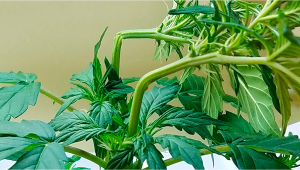
- 1. What does super cropping mean?
- 1. a. What to remember
- 2. How and when is it performed?
- 3. High stress and recovery
- 4. Top tips on super cropping autoflowering plants
- 5. Should you super crop an autoflowering plant?
- 6. In conclusion
You can teach a dog to sit and heel, and a horse to gallop and canter, but what on earth does training a plant entail? Many beginner growers are often baffled at the idea of plant training. Simply put, it involves manipulating the size and shape of a plant in order to improve productivity. There are many different ways to train a cannabis plant; some involve simply tying down growing tips, whereas others rely on inflicting controlled damage on plant tissue. It seems brutal at first, but these methods produce tried and tested results.
If you are learning about growing Cannabis and have heard the term low-stress training, then you may be surprised to know there is such a thing as high-stress training. Cannabis plants are extremely tough and when challenged will often adapt to their environment as well as a physical break to a branch. In this article, we explain everything about super cropping autoflowering plants, how it works, and the benefits associated including our top tips.
1. What Does Super Cropping Mean?
This term means to break certain parts of the plants prior to flowering, encouraging the plant to distribute a growth repair hormone throughout the entire plant. As the cell walls of the branch that was purposely damaged are repaired, the result will be a solid wooden knuckle that has formed around the break. In the same way, when we break a bone, the weakest part becomes calcified ensuring that point now remains stable. Performing this technique should be done by growers who are more familiar with plant training, and understand what is happening to the plant during this time. It is very easy to get it wrong but once done correctly, it really will make a huge difference in how well your plants grow. Supercropping seems unreasonably risky to the uninitiated. However, experienced growers employ this technique because the rewards outweigh the risk.
The wood-like knuckle that forms acts as somewhat of an anchor point for the rest of the branch. Instead of placing all of their weight through standard tissue, huge colas are now supported by calloused tissue that is much less likely to snap, even in strong winds outdoors. As well as increasing the strength of branches and serving as a stimulating source of abiotic stress, supercropping also possesses another benefit. By bending and redirecting branches, cannabis growers are able to manipulate and shape the canopy. This allows them to open up the canopy and increase airflow, a factor that decreases the chances of mould forming on flowers closer to harvest time. Cultivators can also spread out the bud sites in the canopy, ensuring that all of them are exposed to adequate levels of light and that none of them are overshadowed by larger colas and sprawling fan leaves.
What To Remember
- A high-stress is a technique that will cause the inner cell walls to break and repair.
- Best suited for more experienced growers who are confident being hands-on.
- Recovery time is essential in order to achieve the best results from the technique.
2. How And When Is It Performed?
When growing with autoflowering cultivars, any type of plant training should always be performed during the growing phase. Typically autoflowering strains begin to heavily flower from week 4 onwards. Considering how traumatic super cropping is getting the timing right can be the difference between strong, hardwood plants with plenty of natural support, and weaker, thinner branches.
Step 1: It is a good idea to start with only one super crop on the main central stem. You will want to locate the point between internodal growth. For example, in between the 3rd and 4th internode, you would select this area for the break.
Step 2: Now you will support the plant making sure it is stable and does not move around when you are applying the technique. Simply place your finger and thumb around the center of the stem, gently applying pressure to the inner cell walls.
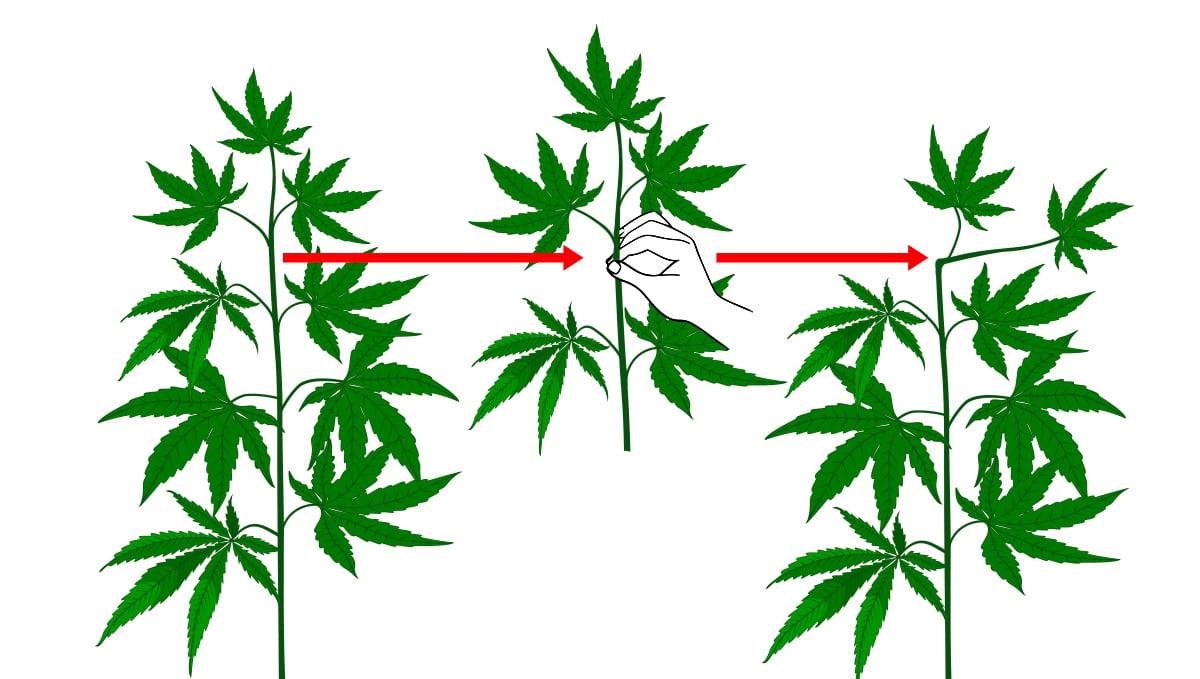
Step 3: Once you feel a breaking sensation and oftentimes will hear a popping noise, then you can now leave the plant to recover. Some strains will make a loud popping sound whilst others may not, so it is very important to feel the inner stem crumble and break between your finger and thumb.
Step 4: After 5-7 days, you will notice a hardwood knuckle has formed around the point where you squeezed. Once the plants are fully recovered, then it is possible to apply this technique again on side branches, or further up or lower down the main stem in correspondence with the original break.
3. High Stress and Recovery
One of the most crucial parts of a successful super crop is the recovery time given to the plants after the first time the technique has been applied. Allowing the inner cells walls of the branch to grow a wooden knuckle takes time.
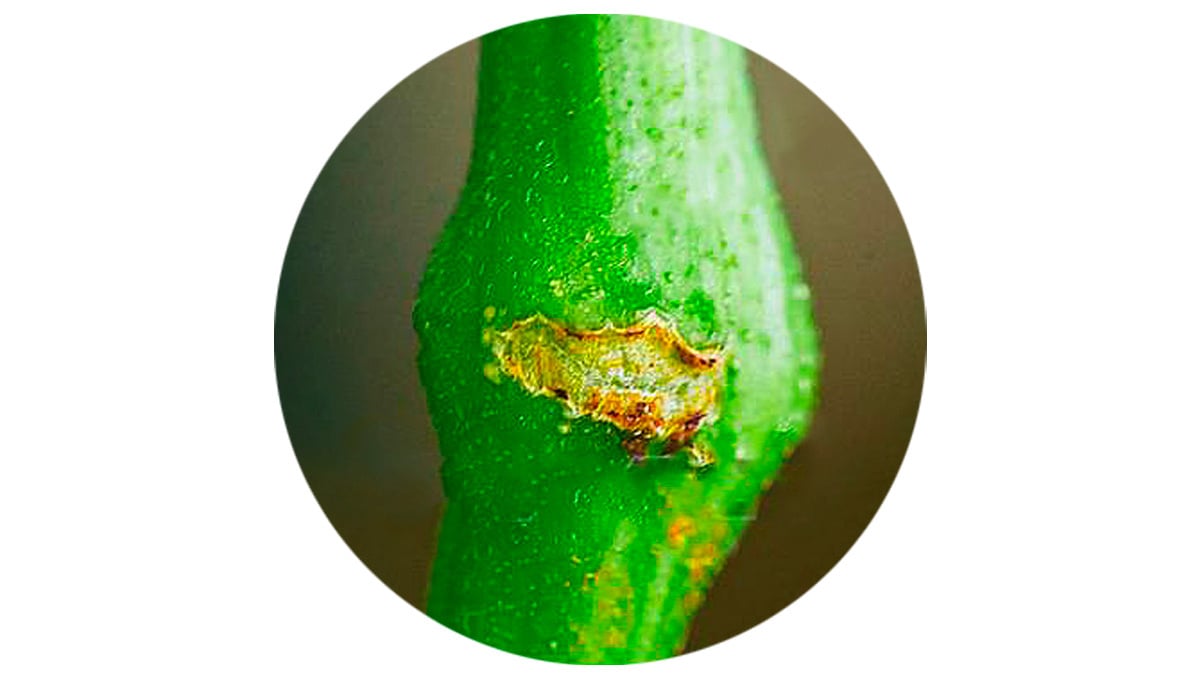
Remember, before performing the technique again it is essential the plants get a chance to fully heal allowing the growth repair hormone to do its work. Supercropping boils down to a balancing act. Attempt the training technique again too early and you risk damaging the healing wound and undoing all of your hard work; you may even sever a flower-bearing branch completely. Likewise, waiting too long means you’re just wasting time. Once you get used to what a healed branch looks like, you’ll become more confident when it comes to working with a branch that has already undergone training.
4. Top Tips On Super Cropping Autoflowering Plants
1. Super cropping is an excellent way to really strengthen the branches and stems. You will see how much support the wooden knuckle offers as the plants begin to bulk up with weight.
2. If the plants are young and fresh, do not perform any type of high-stress technique until they have a hardwood appearance. Applying the technique to plants that are not mature enough can severely damage the plants beyond repair.
3. Do not cause the plants any type of stress once you see flowers being produced. High-stress techniques once flowering starts can be traumatic and lead to stunted plants or worse yet hermaphrodites.
4. Some cultivars will react better to super cropping than others and be more flexible when it comes to durability.
5. When combined with low stress training and SCROG, it is possible to apply the breaks allowing plants to grow horizontally.
5. Should you Super Crop an Autoflowering Plant?
That really depends on which strain you are working with, and what your goals are. Autoflowering strains of cannabis have an inbuilt genetic timer that will switch the plant’s vegetative growth stage automatically over to the flowering period after only 3 to 4 weeks. This really does not leave a lot of time for the plant to heal and recover from such traumatic training. In general, it will take a plant anywhere from 5 to 8 days to recover, with this time being essentially lost in terms of growth.
Larger, Sativa-dominant stains that have a slightly longer vegetative growth period will be able to handle the stress that super cropping imparts on the plant better than smaller, Indica-dominant strains. Super cropping is an advanced cultivation technique and is not recommended for novice growers, especially with autoflowering strains. Make sure you have a full understanding of any strain you wish to super crop and have already grown the strain a few times, otherwise you may run into some issues.
For the most part, we do not suggest super cropping for autoflowering cannabis strains. The stress that is put onto the plant from such invasive techniques just simply stunts the growth pattern for too long. This is fine for regular photoperiod plants where you can control the length of the vegetative growth, but the risk is too high with autos
Instead, why not try some less invasive techniques? LST techniques work fantastically with autoflowers. All you need are some soft gardening ties and a little patience. When you see the first true leaves appear tie the plant down so it grows horizontally, which will allow all the budding sites to receive the same amount of light penetration and tricks the plant into splitting the nutrients and hormones equally among all the flowers (instead of heavily favoring the main cola).
6. In Conclusion
When done correctly the results are highly beneficial, encouraging autoflowering plants to grow with more vigor, enhanced structure, added support, growth hormones, and increased yields. When choosing a strain to practice your newly discovered super cropping technique, remember to get a sturdy grower, like Purple Lemonade. She is a great candidate for training and is up for any challenge.
We do recommend super cropping for more experienced growers that have worked their way through the various types of low stress training from topping, fimming and tying down.








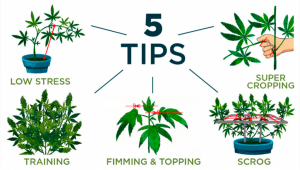
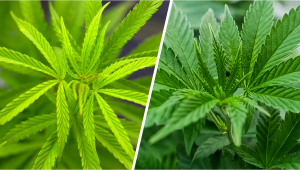


Comments